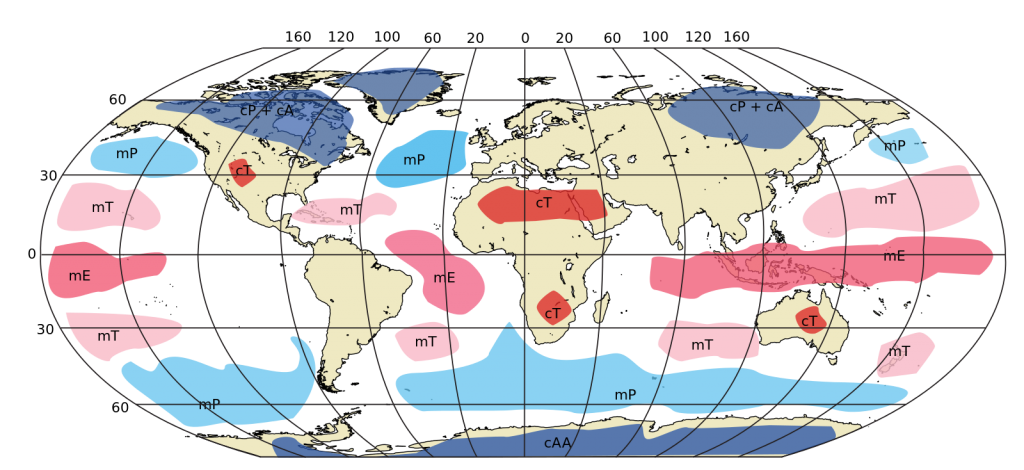The air around you has weight, and it presses against everything it touches. That pressure is called atmospheric pressure, or air pressure. It is the force exerted on a surface by the air above it as gravity pulls it to Earth.
Atmospheric pressure is commonly measured with a barometer. In a barometer, a column of mercury in a glass tube rises or falls as the weight of the atmosphere changes. Meteorologists describe the atmospheric pressure by how high the mercury rises. The unit to measure air pressure is the hectopascal.

An atmosphere (atm) is a unit of measurement equal to the average air pressure at sea level at a temperature of 15 degrees Celsius (59 degrees Fahrenheit). One atmosphere is 1,013 millibars, or 760 millimeters (29.92 inches) of mercury.
Atmospheric pressure drops as altitude increases.
As the pressure decreases, the amount of oxygen available to breathe also decreases. At very high altitudes, atmospheric pressure and available oxygen get so low that people can become sick and even die.

Mountain climbers use bottled oxygen when they ascend very high peaks. They also take time to get used to the altitude because quickly moving from higher pressure to lower pressure can cause decompression sickness. Decompression sickness, also called “the bends”, is also a problem for scuba divers who come to the surface too quickly.
Aircraft create artificial pressure in the cabin so passengers remain comfortable while flying.
Atmospheric pressure is an indicator of weather. When a low-pressure system moves into an area, it usually leads to cloudiness, wind, and precipitation. High-pressure systems usually lead to fair, calm weather.

High pressure systems
A high pressure system, also known as an anticyclone occurs when the weather is dominated by stable conditions. Under an anticyclone air is descending, forming an area of higher pressure at the surface. Because of these stable conditions, cloud formation is inhibited, so the weather is usually settled with only small amounts of cloud cover. In the Northern Hemisphere winds blow in a clockwise direction around an anticyclone. As isobars are normally widely spaced around an anticyclone, winds are often quite light.
Anticyclones can be identified on weather charts as an often large area of widely spaced isobars, where pressure is higher than surrounding áreas.

Low pressure systems
A low pressure system, also known as a depression occurs when the weather is dominated by unstable conditions. Under a depression air is rising, forming an area of low pressure at the surface. This rising air cools and condenses and helps encourage cloud formation, so the weather is often cloudy and wet. In the Northern Hemisphere winds blow in anticlockwise direction around a depression. Isobars are normally closely spaced around a depressions leading to strong winds.
Depressions can be identified on weather charts as an area of closely spaced isobars, often in a roughly circular shape, where pressure is lower than surrounding areas. They are often accompanied by fronts.
POWER POINT:
NOTES:
WORKSHEETS TO PRACTICE:
ANSWER ALL OF THE FOLLOWING QUESTIONS ON SEPARATE SHEET OF PAPER USING FULL SENTENCES
What do you know about the Weather
VIDEOS TO REVIEW:
